With its sweet, mild flavor and vibrant red flesh, the red onion is a must plant for gardeners who love to cook. And just in case you were wondering it’s just as easy to plant and grow red onions as it is white or yellow!
Red onions feature a purplish-colored skin with white flesh. They are mostly used in cooking dishes or eaten raw, but their red skins can also be used as an all-natural dye.
All onions are actually considered to be biennials, which means that it takes two full years for the plant to complete its lifecycle. During the first year of growth, the seeds grow into small bulbs.
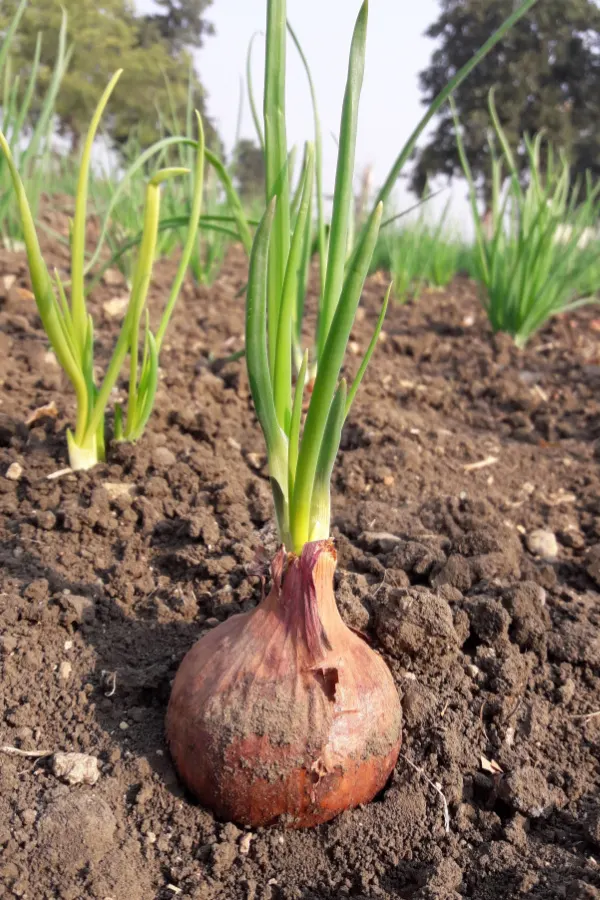
During the second year, the small onion bulbs, more commonly known as onion sets, will grow into the large bulbs that you are used to purchasing at the grocery store. You can grow red onions from either seeds or onion sets, all depending on your end goal.
Thankfully, both are easy to maintain as long as you follow a few basic tips. And whether you plant white, yellow, or red onions, the process is entirely the same.
Types Of Red Onions
In order to have success growing red onions, you need to keep in mind that different varieties of onions respond differently to the day length in your location. Onions are grouped into three main categories: long-day onions, short-day onions, and day-neutral onions.
Long-day onions need around 14 to 16 hours of daylight in order to turn into bulbs. They are typically grown in Northern regions (growing zones 6 and colder). An advantage of long-day onions is that they store very well after harvesting. Ruby Red is an example of a long-day red onion.
Short-day onions, on the other hand, need around 10 to 12 hours of daylight. They perform better in locations with milder winters (zones 7 and warmer). While you can grow them in Northern areas, the bulbs will not grow to be as large. Red Creole and Red Grano are examples of short-day red onions.
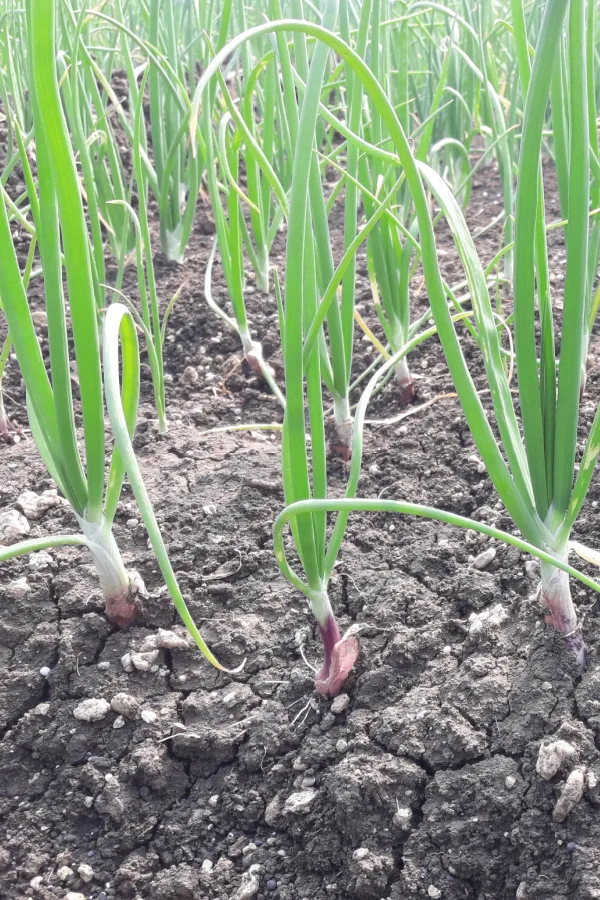
There are also day-neutral onions that can form bulbs no matter what the length of daylight is. The day-neutral onions are a good choice for most all locations, but especially for growing zones 5 and 6. Red Candy Apple is an example of a day-neutral red onion.
Be sure to choose a variety that works well for your growing season or else you might not get the results you are hoping for with bulb growth.
How To Plant & Grow Red Onions
As mentioned above, You can grow red onions from seeds or from onion sets. Most find it easier to grow from sets, as it produces a larger onion and makes planting, weeding and mulching a little bit less difficult. Onion seeds are tiny, and you can have trouble planting and tending to them when they start out.
No matter which option you choose, red onions, like all other onions, need loose, well-draining soil in order to grow properly. They will struggle in soil that is heavy and clay-like. If possible, amend with plenty of sand and compost. Aim for a pH level of around 6.0 to 6.8.
Choose a growing location that receives full sun. Onions grow best when they get at least six to eight hours of sunlight each day.
Planting Onion Seeds & Sets
Growing From Seeds
Red onion seeds can be started indoors or directly sown. When starting seeds indoors, start your seeds about eight to twelve weeks before your Last Spring Frost Date.
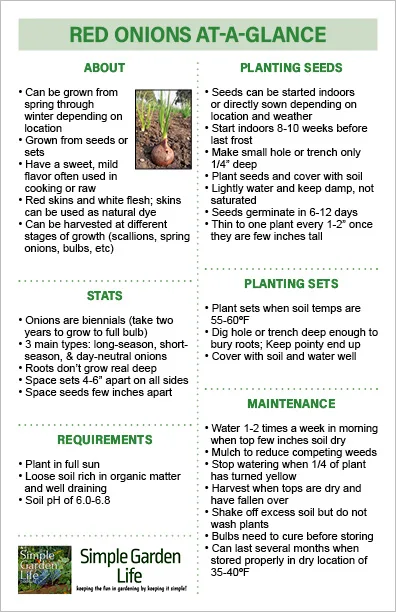
Choose a simple tray or container that has good drainage. Place pre-moistened seed starting soil mix into your containers. Commercial mixes work well for starting red onion seeds. (Product Link: Miracle-Gro Seed Starting Potting Mix)
Carefully place a few seeds per container, spacing them around half an inch apart and ¼ inch deep. Lightly cover seeds with a thin layer of soil. Place a clear plastic lid or plastic wrap on the trays and keep the soil moist. Seeds should germinate in around 6 to 12 days. As soon as seeds germinate, remove the plastic cover and place them under lights.
When directly sowing, you need to wait until the threat of frost has passed before planting. Sow seeds in rows, planting one seed about every inch. Once seeds are a few inches tall, thin them so you have one seedling every couple of inches.
Growing From Onion Sets
Red onion sets need to be treated just a little bit differently than seeds when planting since the sets are in their second year of growth. While onion sets are a bit more expensive than seeds, they grow to bulb much faster and are easier to work with.
Choose onion sets that look healthy and have a somewhat firm small bulb. Discard or compost any sets that are soft and extremely small. When you start with a strong, healthy onion set, you have a better chance of it growing into large, firm bulbs.
Once soil temperatures reach when soil temps are 55-60º Fahrenheit, you can plant outside. Amend your soil with plenty of compost and sand to keep it loose and well draining.
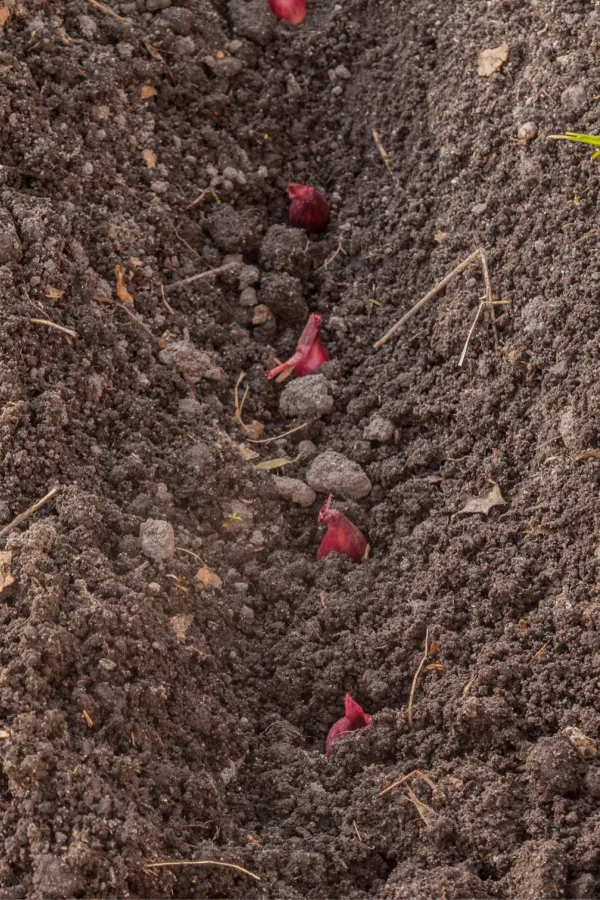
Plant east set about one inch deep with all of their roots fully covered. Ensure that the pointy end is up when planting so the shoots can grow upward and the roots can grow down. Space bulbs about four to six inches apart in all directions. Water well after planting.
Long-Term Care – How To Grow and Maintain Red Onions
Watering
Since onion roots don’t grow really deep in the soil, they will likely need to be watered a bit more often than some of your other plants. If the top few inches of soil is dry, give it a good drink. This will likely mean you will need to water once or twice a week, especially during really warm weather. When watering, do so in the morning to allow the onions to dry out some during the day.
Mulching – How To Plant & Grow Red Onions
Once your red onions grow a few inches above the soil line, it’s a good idea to add a layer of natural mulch. Using mulch is a great way to snuff out weeds, help retain moisture, and help to regulate soil temperatures.
Shredded leaves, straw, and grass clippings are all excellent natural mulches. Just be sure not to cover any onion tops with the mulch. Add more as needed as the growing season goes along.
When To Harvest Red Onions – Plant & Grow Red Onions
You can harvest red onions at almost any time during the growing season. In fact, you can harvest red onions as scallions after just a couple of weeks of growth. You can harvest spring onions a few weeks after that. To learn about harvesting onions at different stages of growth, check out “How To Plant Green Onions From Seed”.
Once you notice that around a quarter of each onion top has started to yellow, stop watering. This will allow the soil to dry up and make harvesting much easier.
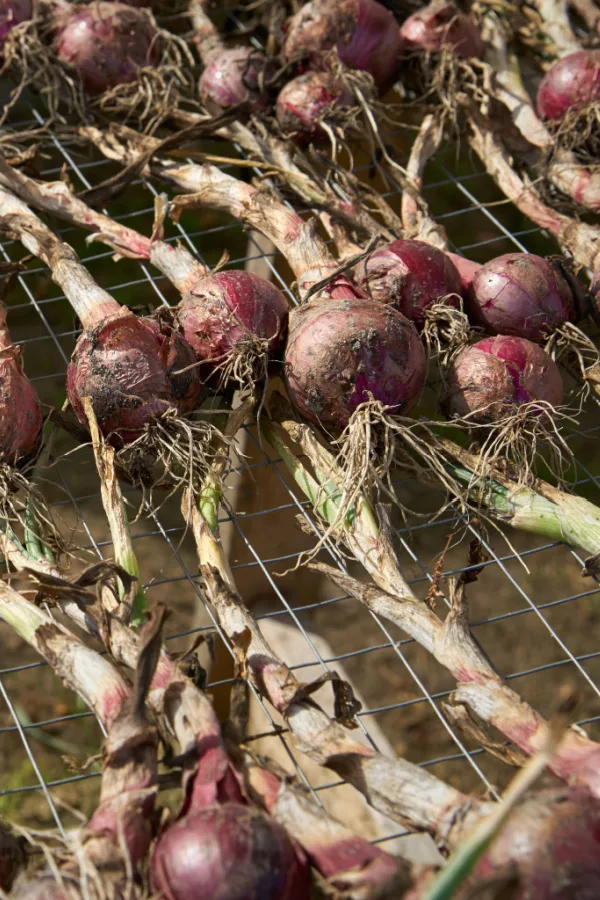
Then, when the foliage is mostly yellow and the tops have fallen over, the plant is ready for harvesting. If it recently rained, wait until the soil has a chance to dry up a little bit before harvesting.
Use a small garden trowel to carefully dig below the onion bulb and gently pull it up. Be careful not to cut into the bulb. Shake off any excess soil but do not wash off bulbs at this time.
Curing Onions
The bulbs now need a couple of weeks to cure. Place onions in a single row in a dry location that has good airflow. A wire rack or large screen works well. Once onions are cured, you can cut off the roots and tops, storing them in a location that is around 35 to 40º Fahrenheit.
With proper curing and storage, you and enjoy your red onions months after harvesting!
Follow Our Facebook Page For Even More Great Tips! Simple Garden Life Facebook Page
Simple Garden Life is a website dedicated to keeping gardening fun, simple and enjoyable! We publish two new articles each week along with a new garden podcast episode every two weeks. This article may contain affiliate links.
